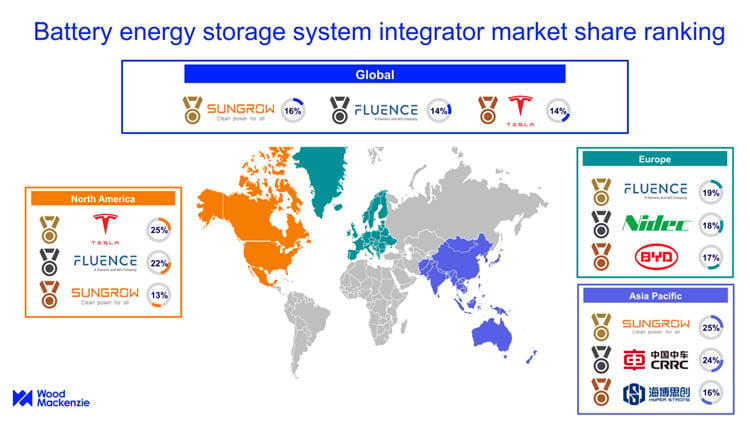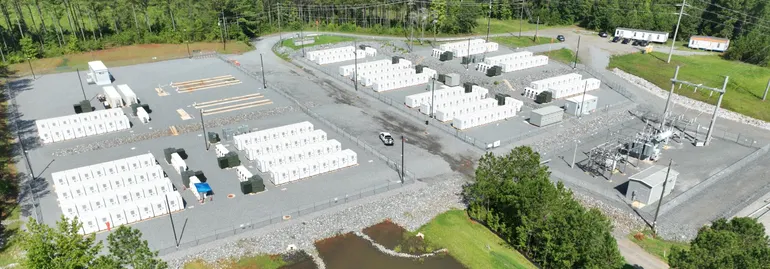China aims for energy storage installations equivalent to today’s global capacity by 2027 – Energy-Storage.News

Report on China’s Energy Storage Expansion Plan and Alignment with Sustainable Development Goals
Executive Summary
The People’s Republic of China has announced a strategic plan to significantly expand its energy storage capacity. The initiative aims to install 180GW of Battery Energy Storage Systems (BESS) by 2027, a target equivalent to the current global installed capacity. This policy is designed to promote the development of large-scale storage facilities, encourage substantial investment in the sector, and facilitate greater participation in the electricity market. The plan represents a critical step in advancing several key United Nations Sustainable Development Goals (SDGs).
Strategic Objectives and Targets
- Capacity Expansion: To achieve a national installed BESS capacity of 180GW by the year 2027.
- Infrastructure Development: To promote and support the construction and operation of large-scale energy storage facilities to enhance grid stability and flexibility.
- Market Integration: To create a favorable policy environment that encourages private investment and integrates energy storage assets into the national electricity market mechanisms.
Contribution to Sustainable Development Goals (SDGs)
This initiative directly supports and accelerates progress on multiple SDGs:
-
SDG 7: Affordable and Clean Energy
- The expansion of BESS is fundamental to integrating intermittent renewable energy sources, such as solar and wind, into the power grid, thereby ensuring a stable and reliable supply of clean energy.
- This directly addresses Target 7.2, which calls for a substantial increase in the share of renewable energy in the global energy mix.
- It enhances energy security and supports the transition away from fossil fuels.
-
SDG 13: Climate Action
- By enabling a massive scale-up of renewable energy deployment, the plan is a significant measure for climate change mitigation.
- It will lead to a substantial reduction in greenhouse gas emissions from the power sector, aligning with the goals of the Paris Agreement.
- This policy integrates climate action into national energy strategy, directly supporting Target 13.2.
-
SDG 9: Industry, Innovation, and Infrastructure
- The 180GW target will drive massive investment in building resilient, sustainable, and technologically advanced energy infrastructure (Target 9.1).
- It fosters innovation in battery technology, manufacturing, and grid management systems.
- The plan supports the upgrading of industrial infrastructure to create a sustainable and efficient energy system (Target 9.4).
-
SDG 11: Sustainable Cities and Communities
- A stable and clean energy grid is essential for the functioning of modern, sustainable cities.
- Enhanced grid reliability reduces the risk of power outages and supports the electrification of transport and heating, contributing to cleaner urban environments.
- This initiative helps reduce the adverse per capita environmental impact of cities by facilitating a cleaner energy supply (Target 11.6).
1. Which SDGs are addressed or connected to the issues highlighted in the article?
-
SDG 7: Affordable and Clean Energy
The article’s central theme is China’s plan to install 180GW of Battery Energy Storage Systems (BESS). This directly supports the transition to clean energy by enabling the large-scale integration of intermittent renewable sources like solar and wind, ensuring a more reliable and sustainable energy supply.
-
SDG 9: Industry, Innovation, and Infrastructure
The plan to build 180GW of BESS represents a massive investment in sustainable and resilient energy infrastructure. It drives innovation in energy storage technology and its large-scale industrial application, as mentioned in the plan to “promote large-scale energy storage facilities.”
-
SDG 11: Sustainable Cities and Communities
By improving the stability and reliability of the power grid through energy storage, this initiative contributes to making urban energy systems more resilient and sustainable, which is essential for the functioning of modern cities.
-
SDG 13: Climate Action
Energy storage is a critical enabler for decarbonizing the power sector. By facilitating a higher share of renewables, China’s plan to expand BESS capacity is a significant national strategy aimed at reducing greenhouse gas emissions and combating climate change.
2. What specific targets under those SDGs can be identified based on the article’s content?
-
SDG 7: Affordable and Clean Energy
- Target 7.2: By 2030, increase substantially the share of renewable energy in the global energy mix. The article’s focus on energy storage is fundamental to achieving this target, as storage solutions are necessary to manage the variability of renewable energy sources and allow for their wider adoption.
- Target 7.a: By 2030, enhance international cooperation to facilitate access to clean energy research and technology… and promote investment in energy infrastructure and clean energy technology. The article highlights China’s plan to “promote large-scale energy storage facilities, encouraging investment,” which directly aligns with promoting investment in clean energy infrastructure.
-
SDG 9: Industry, Innovation, and Infrastructure
- Target 9.4: By 2030, upgrade infrastructure and retrofit industries to make them sustainable… The development of 180GW of BESS is a significant upgrade to the national energy infrastructure, making it more sustainable and capable of supporting clean technologies.
-
SDG 13: Climate Action
- Target 13.2: Integrate climate change measures into national policies, strategies and planning. The article explicitly states that “China has published plan to promote large-scale energy storage facilities,” which is a clear example of a national plan designed to support climate change mitigation efforts.
3. Are there any indicators mentioned or implied in the article that can be used to measure progress towards the identified targets?
-
Installed Capacity of BESS
The most direct and quantifiable indicator mentioned in the article is the target of “180GW of installed BESS capacity by 2027.” This figure serves as a precise metric to track the progress of infrastructure development under SDGs 7 and 9.
-
Existence of a National Plan
The article’s statement that “China has published plan” serves as an indicator for Target 13.2. The existence and implementation of this national strategy is a measure of the country’s commitment to integrating climate action into its planning.
-
Investment in Energy Storage
The article implies an indicator by mentioning the plan is “encouraging investment.” Tracking the financial flows into the development of these large-scale energy storage facilities would be a key indicator of progress towards Target 7.a.
4. Table of SDGs, Targets, and Indicators
| SDGs | Targets | Indicators |
|---|---|---|
| SDG 7: Affordable and Clean Energy | 7.2: Increase substantially the share of renewable energy in the global energy mix. | Installed capacity of Battery Energy Storage Systems (BESS), with a specific goal of 180GW by 2027. |
| SDG 9: Industry, Innovation, and Infrastructure | 9.4: Upgrade infrastructure and retrofit industries to make them sustainable. | Total installed capacity of new, sustainable energy infrastructure (180GW of BESS). |
| SDG 13: Climate Action | 13.2: Integrate climate change measures into national policies, strategies and planning. | The publication and implementation of a national plan for large-scale energy storage. |
Source: energy-storage.news

What is Your Reaction?
 Like
0
Like
0
 Dislike
0
Dislike
0
 Love
0
Love
0
 Funny
0
Funny
0
 Angry
0
Angry
0
 Sad
0
Sad
0
 Wow
0
Wow
0








































































